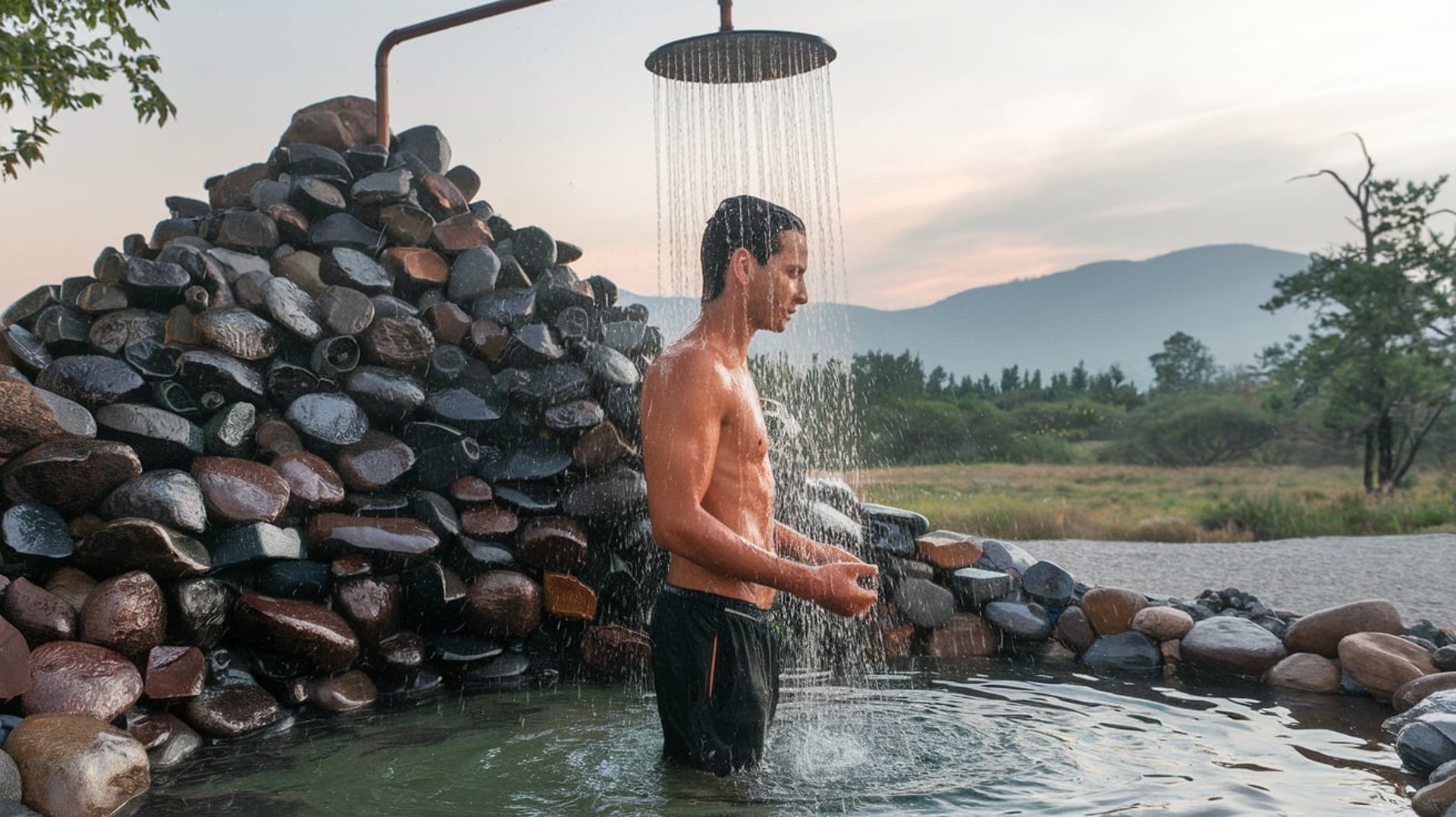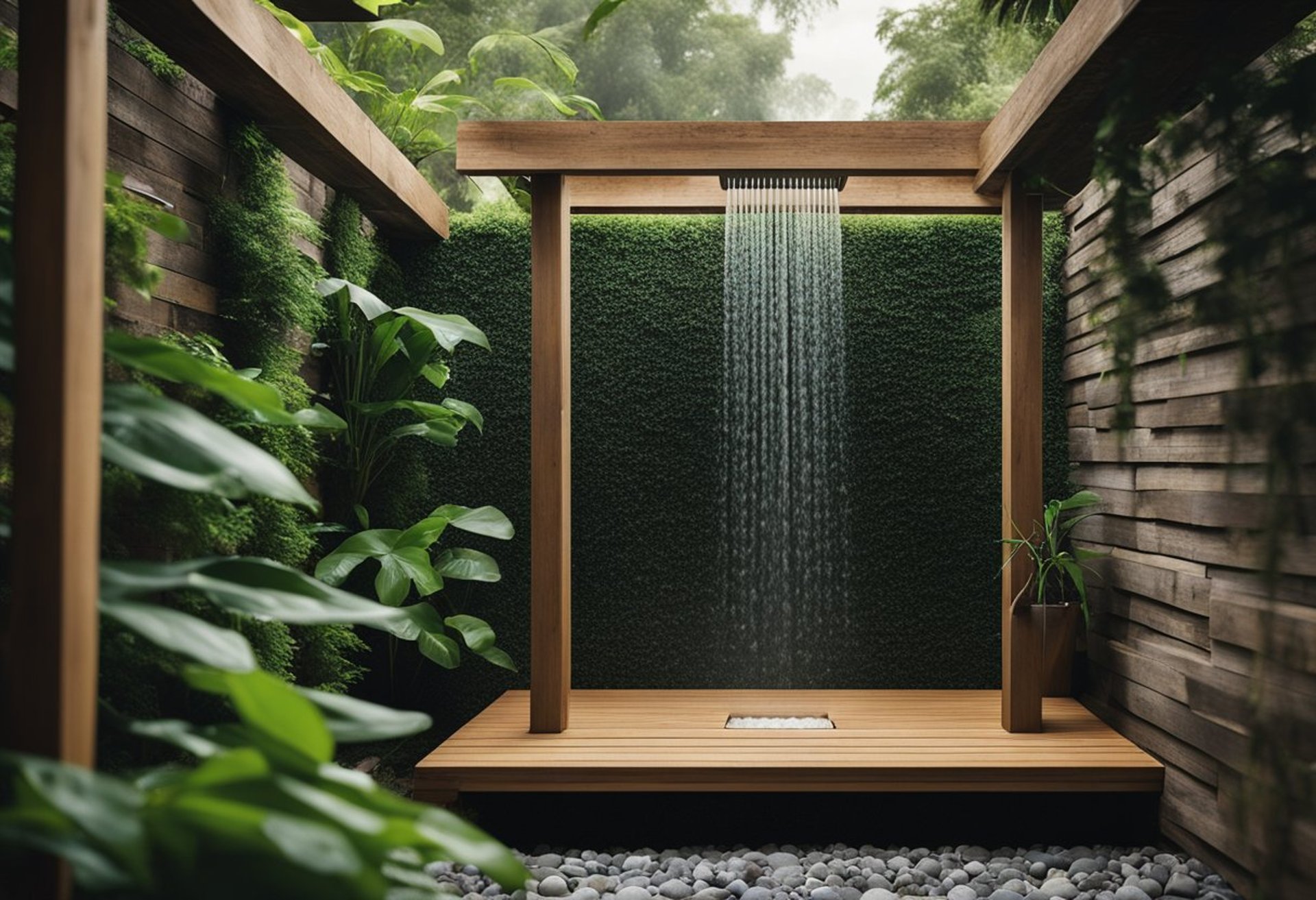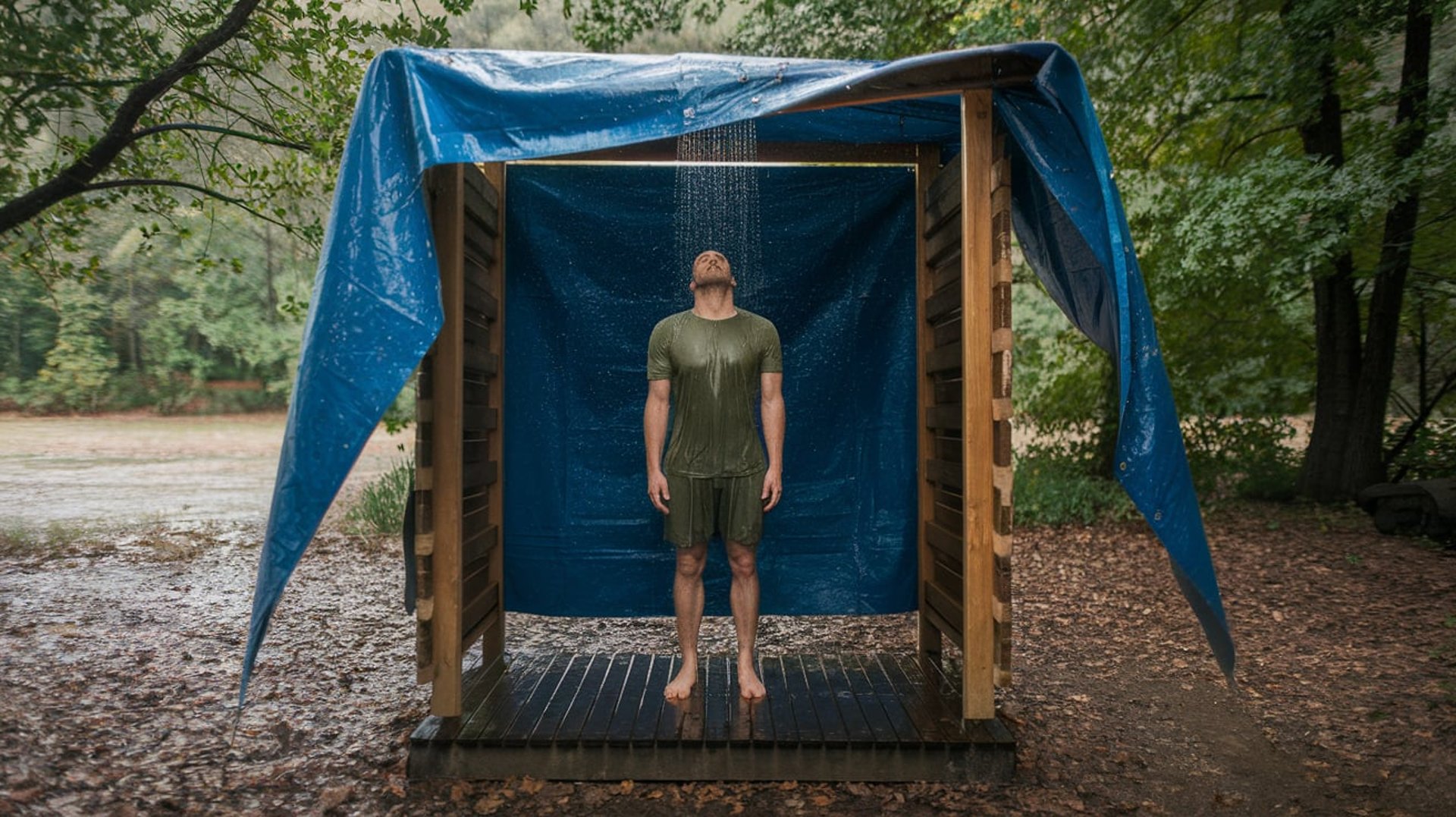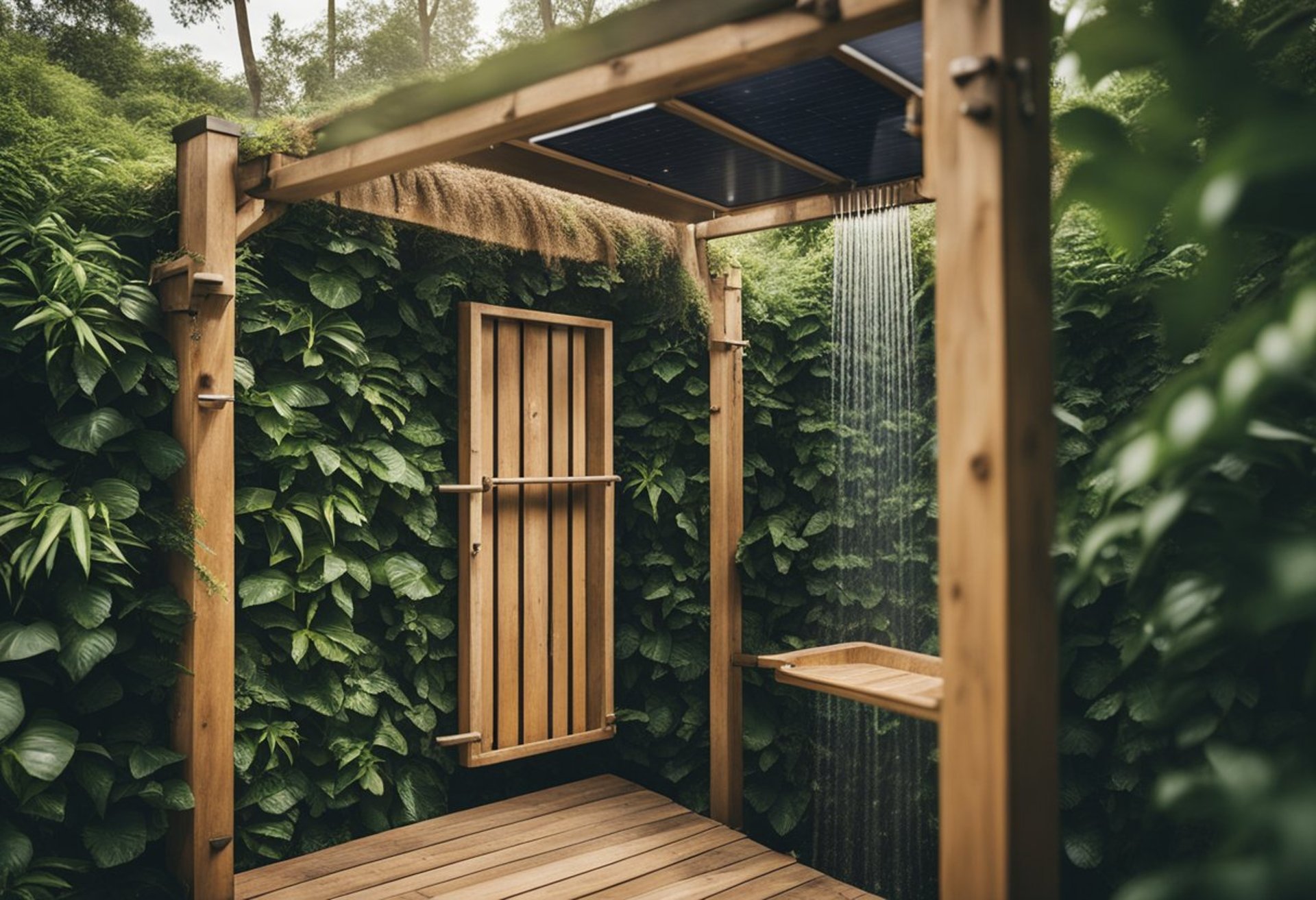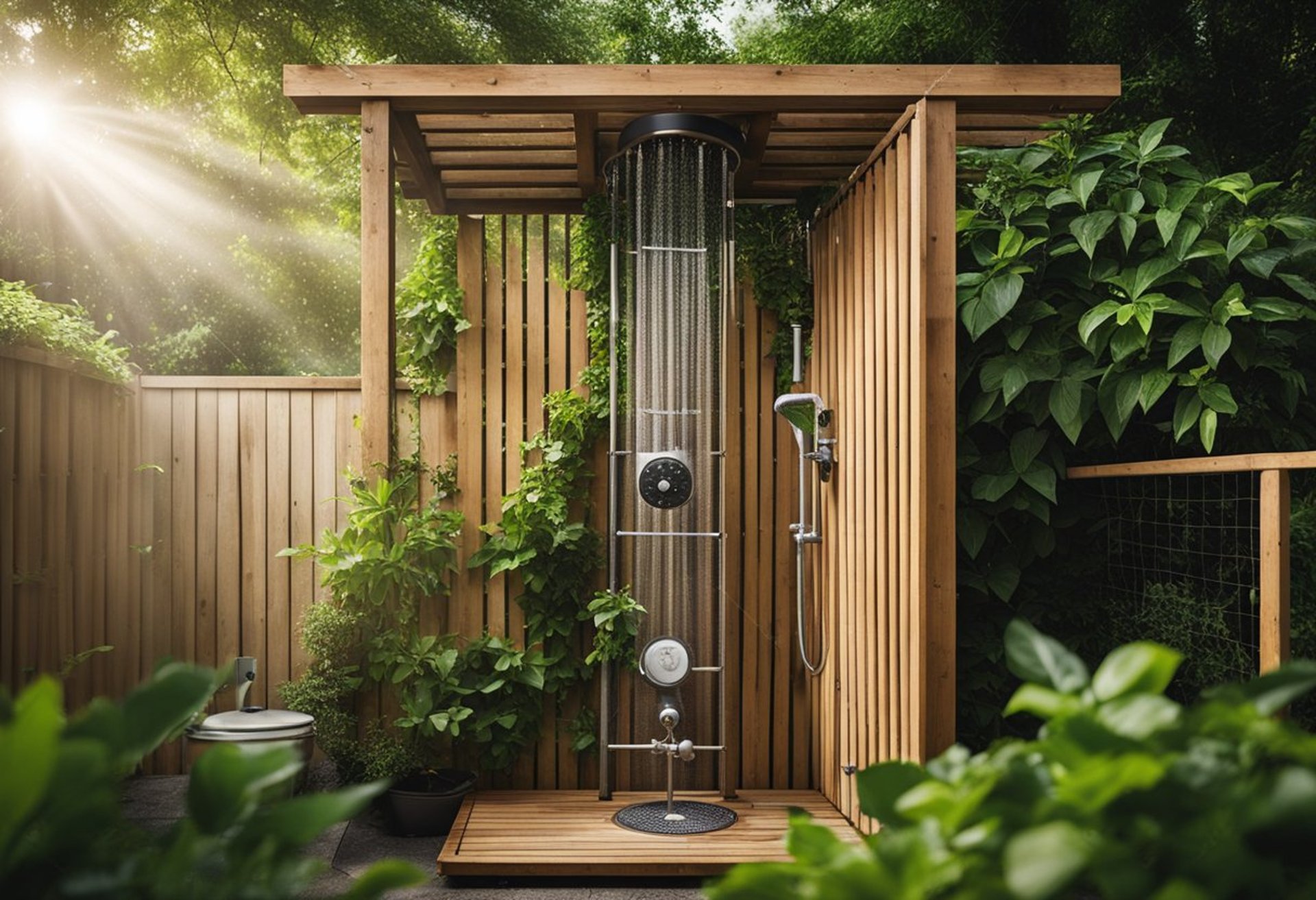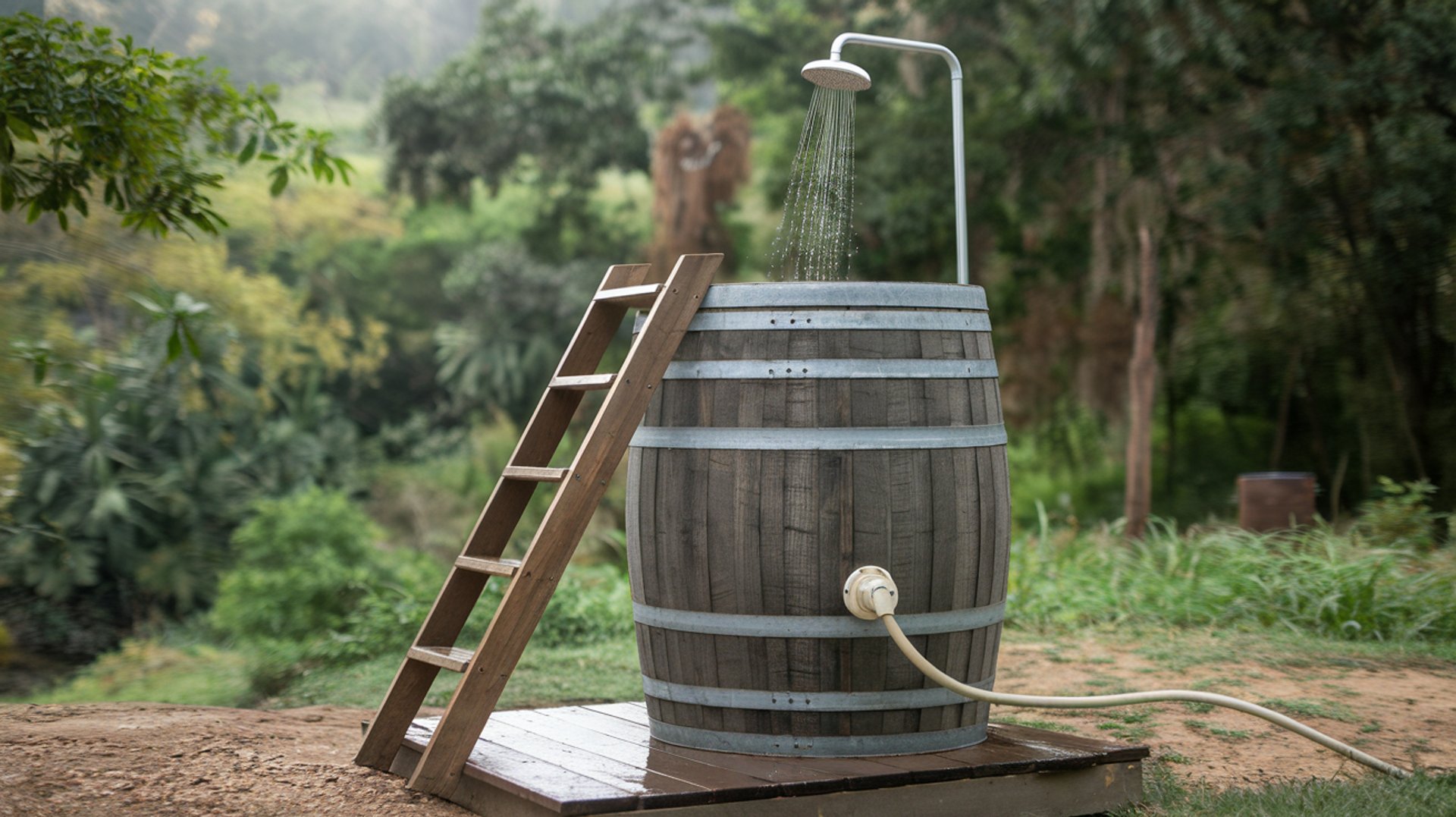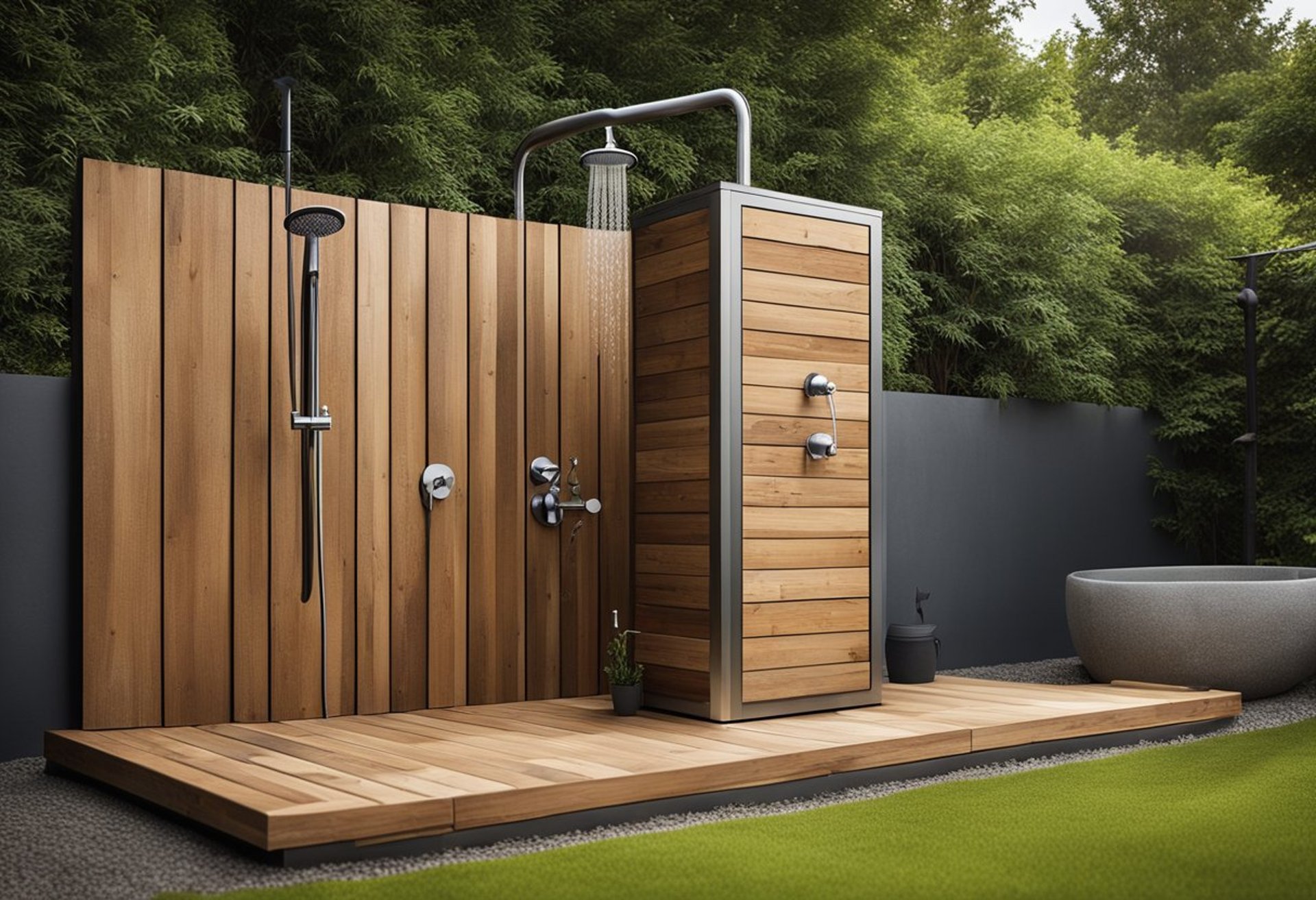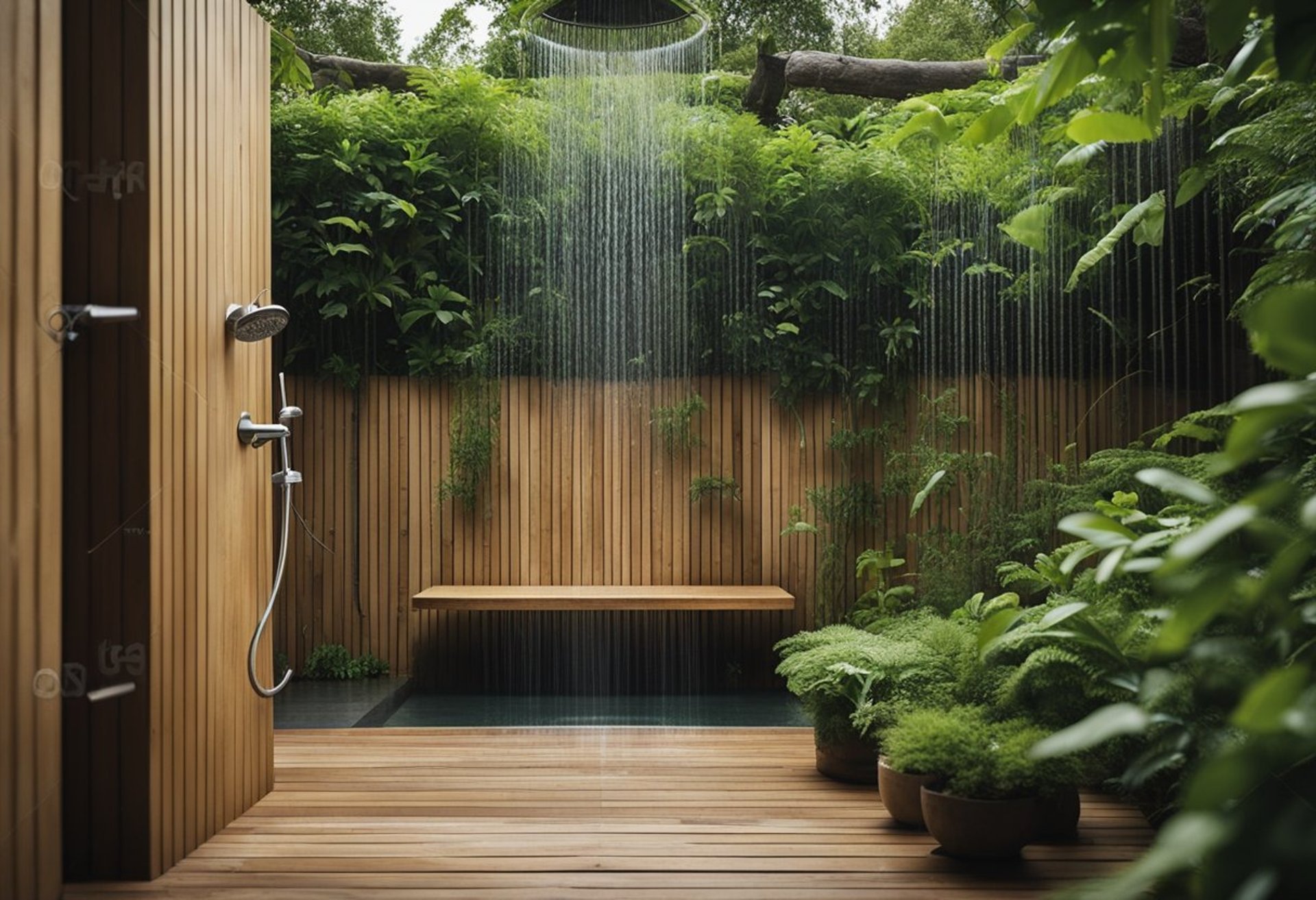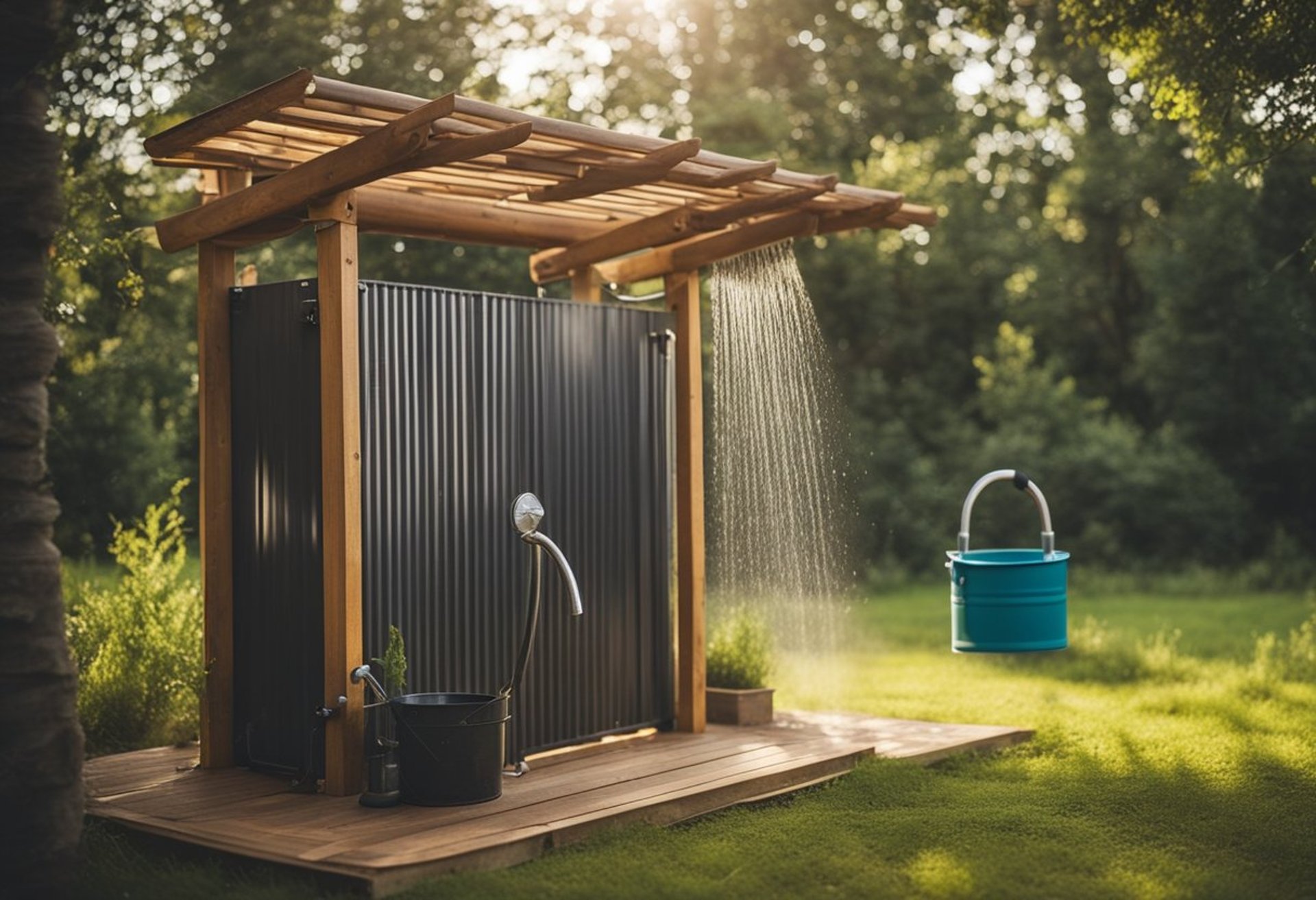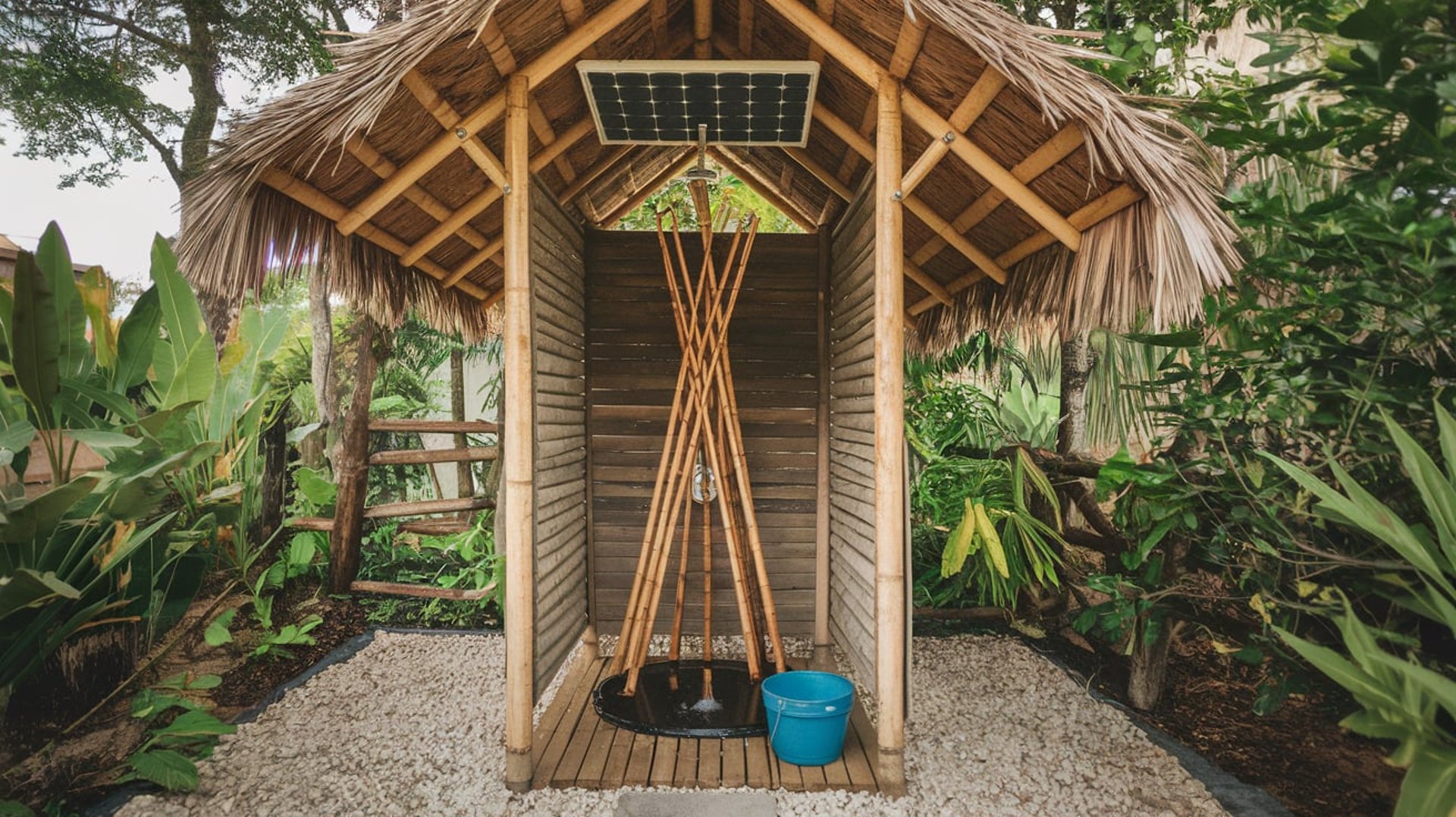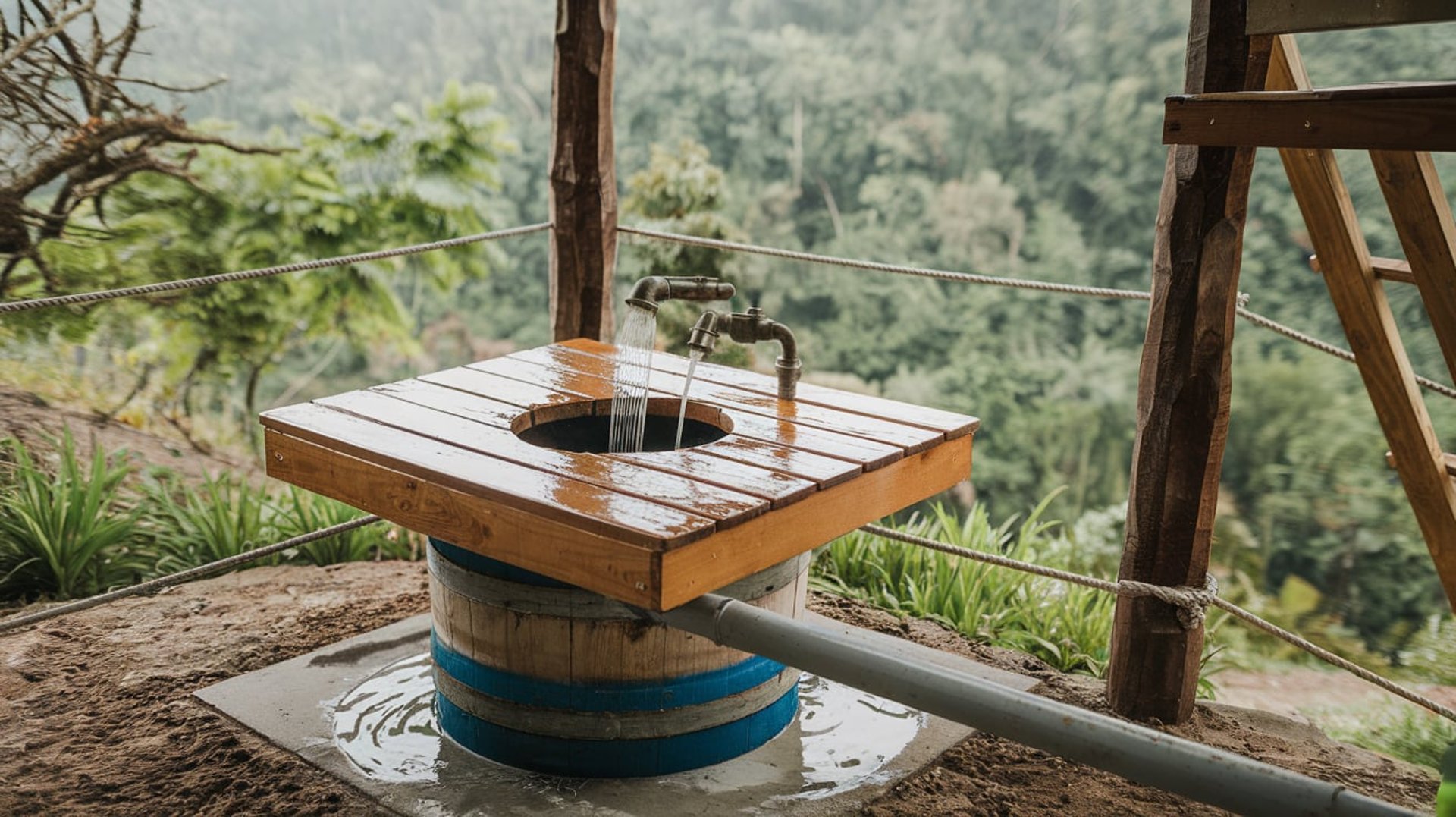Off the Grid Shower Ideas: Creative Solutions for Sustainable Outdoor Showers
Finding a way to shower off the grid can enhance the experience of outdoor living and self-sufficiency. Creative off-the-grid shower ideas can range from simple setups using basic materials to more complex systems utilizing solar power and innovative designs. Exploring these options allows individuals to maintain personal hygiene while enjoying nature.
Off the Grid Shower Ideas: Creative Solutions for Sustainable Outdoor Showers
Finding a way to shower off the grid can enhance the experience of outdoor living and self-sufficiency. Creative off-the-grid shower ideas can range from simple setups using basic materials to more complex systems utilizing solar power and innovative designs. Exploring these options allows individuals to maintain personal hygiene while enjoying nature.
Whether it's a DIY solar shower or a portable camping shower, there are various methods to create functional and enjoyable outdoor bathing experiences. Additionally, considering the materials and systems that promote water efficiency is crucial in off-grid scenarios. With proper planning, anyone can achieve a refreshing shower experience without relying on traditional plumbing.
Key Takeaways
Off-the-grid showers can be both practical and enjoyable.
Various systems exist to harness natural resources for bathing.
Proper design and maintenance ensure a sustainable shower setup.
Understanding Off-the-Grid Living
Off-the-grid living involves self-sufficiency and sustainability, where individuals disconnect from traditional utility services. This lifestyle requires careful planning and design to ensure comfort and functionality without relying on external resources.
Fundamentals of Off-Grid Systems
Off-grid systems primarily rely on renewable resources such as solar, wind, or hydropower for energy. These systems often include batteries for energy storage and backup generators for cloudy days or low wind conditions.
Water sources are also crucial, using rainwater collection or wells with filtration systems. Waste management solutions include composting toilets and greywater recycling, promoting environmental sustainability.
Key components of off-grid living systems include:
Energy Solutions: Solar panels, wind turbines, or hydropower setups
Water: Rainwater catchment, wells, or nearby streams
Waste: Composting toilets and greywater systems
Off-Grid Cabin Bathroom Essentials
When designing an off-grid cabin bathroom, efficiency and resource management are priorities. A composting toilet is ideal for conserving water and reducing waste; these devices require minimal maintenance and can be installed in small spaces.
Showers can be simple and effective, using a solar shower bag or a DIY setup with a rainwater collection system.
Essential items include:
Composting Toilet: Reduces water use and manages waste efficiently
Solar Shower: Heats water using solar energy for immediate use
Sink Alternatives: Use gravity-fed systems for washing hands or dishes
Home Design for Off-The-Grid Living
An off-grid home design emphasizes sustainability, with layouts that maximize natural light and airflow. Orientation towards the sun can enhance energy efficiency, reducing heating costs in winter and minimizing heat gain in summer.
Materials such as straw bale, earthbag, or recycled materials boost insulation and minimize carbon footprint.
Considerations for design include:
Passive Solar Heating: Large south-facing windows and thermal mass
Natural Ventilation: Cross-ventilation to reduce reliance on mechanical cooling
Compact Layouts: Minimizing square footage lowers energy needs and costs
Incorporating these elements fosters a practical and comfortable off-grid experience, promoting independence from conventional utilities.
Designing Your Off-Grid Shower
Creating an effective off-grid shower requires careful planning and consideration of several key aspects. Each element plays a significant role in ensuring functionality, comfort, and sustainability within a limited resource environment.
Outdoor Shower DIY
Building an outdoor shower can be a rewarding project. Start by choosing a location that offers privacy while being accessible to water sources. A simple structure can be built using wood or bamboo, with an open design that promotes air circulation.
Materials Needed:
Wooden posts or bamboo
Showerhead (solar-powered or gravity-fed)
Hooks for hanging towels
Privacy curtains or natural screens
Installation of a gravity-fed water system is common. Use larger containers placed higher up to allow water to flow through the showerhead using natural gravity. Ensure the setup allows for easy maintenance and cleaning.
Privacy and Protection
Privacy is essential in any outdoor shower. Utilizing natural barriers like trees or hedges can enhance seclusion. Alternatively, using tall fencing or installing privacy screens offers complete coverage.
Suggested Materials:
Trellis with climbing plants
Canvas or weather-resistant curtains
Portable shower stalls
Consider incorporating windbreaks to shield against the elements. A covered overhead structure can protect from rain and snow, maintaining comfort during use. Always ensure that the design falls in line with local regulations regarding outdoor structures.
Water Collection and Drainage
Effective water management is crucial for an off-grid shower. Rainwater collection systems can be integrated into the design, allowing for sustainable water usage.
Key Features:
Gutter systems directing rainwater to a storage tank
Secondary filtration for water quality
Drainage setup to prevent water pooling
Create a sloped base to facilitate proper drainage away from the shower area. A composting or graywater reuse system can be used for discarded water, promoting resourcefulness and environmental responsibility. The goal is to develop a self-sufficient setup that minimizes impact on the surrounding area.
Material and Equipment Selection
Selecting the right materials and equipment is crucial for setting up an effective off-the-grid shower. The choices made can impact sustainability, efficiency, and ease of use.
Choosing Sustainable Materials
When constructing an off-the-grid shower, it is essential to prioritize sustainable materials. Recycled or reclaimed materials can significantly reduce environmental impact.
Recommended materials include:
Corrugated metal for walls, which is durable and weather-resistant.
PVC or HDPE for plumbing to ensure longevity and resistance to corrosion.
Natural stone or bamboo for flooring, offering aesthetics while being eco-friendly.
In selecting materials, consider functionality and maintenance. Non-toxic sealants and finishes enhance durability without compromising environmental integrity. Furthermore, opting for solar-heated components can reduce energy consumption.
Tools and Hardware for Installation
The right tools are necessary for constructing a functional shower. A well-prepared toolkit ensures a smoother installation process.
Essential tools include:
Drill and drill bits for precise hole making.
Saw (hand or power) for cutting materials to size.
Level to ensure the shower is properly aligned.
Important hardware components to consider:
Hoses and fittings compatible with selected plumbing materials.
Showerhead and controls designed for low water flow to enhance sustainability.
Mounting brackets and anchors for secure installation.
Investing in quality tools and hardware leads to a more reliable setup, enhancing the shower's efficiency and durability in an off-the-grid lifestyle.
Off-Grid Water Heating Solutions
Off-grid water heating solutions provide essential methods for accessing hot water without reliance on traditional energy sources. Two popular options include solar water heaters and wood-fired water heaters, each offering distinct benefits and installation requirements.
Solar Water Heaters
Solar water heaters utilize solar panels to capture sunlight and convert it into heat. These systems typically consist of solar collectors, a storage tank, and plumbing connections.
Key components:
Flat-plate collectors are common and can be installed on rooftops or in open areas, maximizing sunlight exposure.
Evacuated tube collectors offer higher efficiency in colder climates.
Installation involves connecting the collectors to the tank. The system circulates water through the solar collectors, heating it before directing it to the storage tank. Proper insulation is essential to retain heat, especially during colder nights or seasons.
Wood-Fired Water Heaters
Wood-fired water heaters provide a reliable method for generating hot water using wood as fuel. These systems can be simple and cost-effective, making them ideal for off-grid living.
Components include:
Wood stove: Acts as the heat source where wood is burned.
Water jacket: Surrounds the stove, allowing heat transfer to the water.
To use this system, water must first circulate through the water jacket. As the stove heats up, it warms the water, which is then directed to the desired area.
Maintenance involves ensuring adequate wood supply and cleaning the stove to prevent creosote buildup. Efficient wood storage and drying practices can enhance performance and reduce smoke emissions.
Off-Grid Cabin Exterior and Fixtures
When designing an off-grid cabin, the integration of the shower with the cabin's exterior and the choice of eco-friendly fixtures play a crucial role in functionality and sustainability. These elements ensure that the cabin remains harmoniously connected to its natural surroundings while maximizing resource efficiency.
Integrating the Shower with Cabin Exterior
This integration focuses on making the shower both functional and aesthetically pleasing. Placing the shower near the cabin entrance not only provides convenience but also allows for easy access to water and drainage.
Using natural materials like stone or wood for the shower area can enhance the cabin's rustic appeal. Water can be heated using solar panels or a wood-fired heater, minimizing reliance on non-renewable energy sources.
Moreover, incorporating privacy elements such as bamboo screens or natural foliage can create a secluded bathing experience. This approach maintains the off-grid ethos while ensuring that outdoor showers blend seamlessly with the environment, providing utility without disturbing the landscape.
Eco-Friendly Fixtures and Features
Choosing eco-friendly fixtures is vital for maintaining sustainability in an off-grid cabin. Low-flow showerheads significantly reduce water usage without compromising the shower experience.
Consider using greywater systems to repurpose water from the shower for irrigation or toilet flushing. This system conserves water while maximizing usage efficiency.
Solar lighting around the shower area can minimize electricity needs, utilizing renewable energy sources. Additionally, implementing composting toilets can enhance water conservation strategies while reducing the environmental footprint of the cabin.
Selecting durable, sustainable materials for fixtures ensures longevity and reduces dependence on replacements, contributing to the overall eco-friendly design of the cabin.
Outdoor Bathroom Design Considerations
When designing an outdoor bathroom, attention to layout and aesthetics plays a crucial role. Proper planning will enhance functionality while ensuring a pleasing environment.
Layout and Space Planning
Effective layout is essential for an outdoor bathroom. It's important to consider the available space and the intended use.
Key factors to include:
Zoning: Divide the area into distinct zones for showering, changing, and storage.
Access: Ensure pathways provide easy access from the main living areas.
Utilize sustainable materials, such as low-maintenance tiles and durable outdoor fixtures, to withstand environmental exposure.
Incorporating privacy screens or natural barriers, such as dense shrubs, can enhance comfort without sacrificing aesthetics.
Natural and Functional Aesthetics
Choosing the right materials and design elements will enhance the outdoor experience.
Consider these aspects:
Natural Materials: Wood, stone, and bamboo blend well with outdoor settings.
Color Scheme: Earthy tones complement nature while providing a calming atmosphere.
Integrating plumbing that harmonizes with existing landscapes is vital.
Functional features to include:
Drainage: Ensure effective drainage to prevent water pooling.
Lighting: Soft, ambient lighting can create a relaxing atmosphere for evening use.
Balancing functionality with natural elements will create an inviting space that feels integrated with its surroundings.
Maintenance and Upkeep
Regular maintenance and proper care are essential for the longevity and functionality of off-the-grid shower systems. This section outlines the critical aspects of routine cleaning and how to address wear caused by weather conditions.
Routine Cleaning and Care
Off-the-grid showers require regular cleaning to prevent buildup and ensure water quality. Depending on the water source, he or she should clean filters and hoses every few weeks.
Recommended materials:
Mild soap
Soft brushes or sponges
White vinegar for mineral deposits
Inspecting and cleaning the showerhead will remove blockages that diminish water flow. Checking for leaks in hoses and connections is also crucial as they can lead to water waste and decreased shower pressure.
Dealing with Weather and Wear
Exposure to the elements can affect shower components, especially in harsh climates. Protecting the shower structure from rain, snow, and UV rays will prolong its life.
Tips for protection:
Use weather-resistant materials like stainless steel or treated wood.
Install a cover or shelter to minimize direct exposure.
Regularly inspect for signs of rust or damage.
Proper drainage is vital to prevent water pooling and damage. It is important to maintain drainage paths free from debris. Address any issues promptly to avoid extensive repairs. Regular maintenance will help keep the shower system functional and safe.

